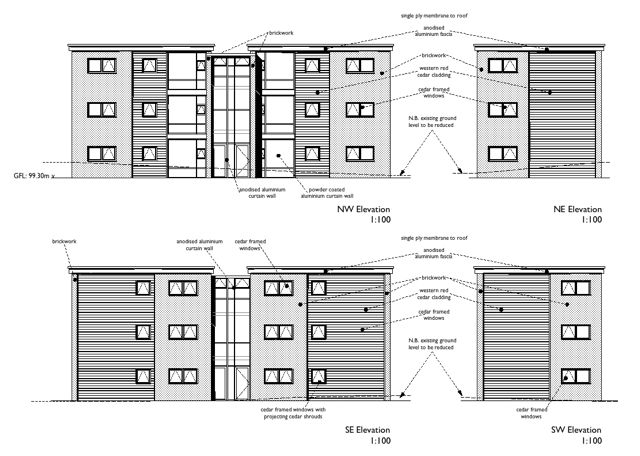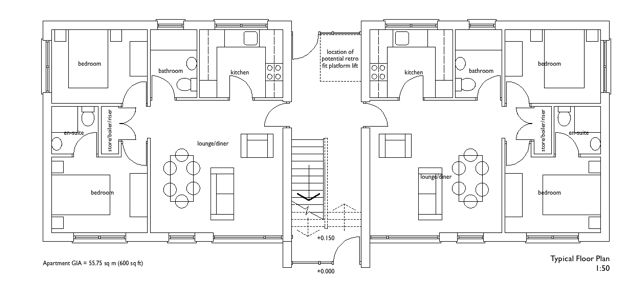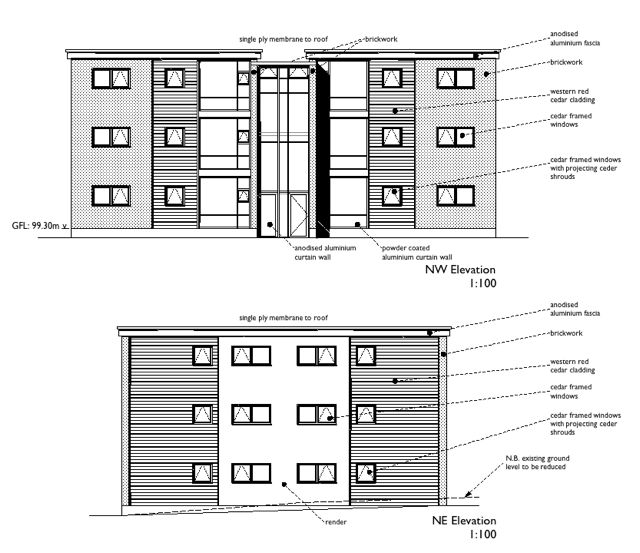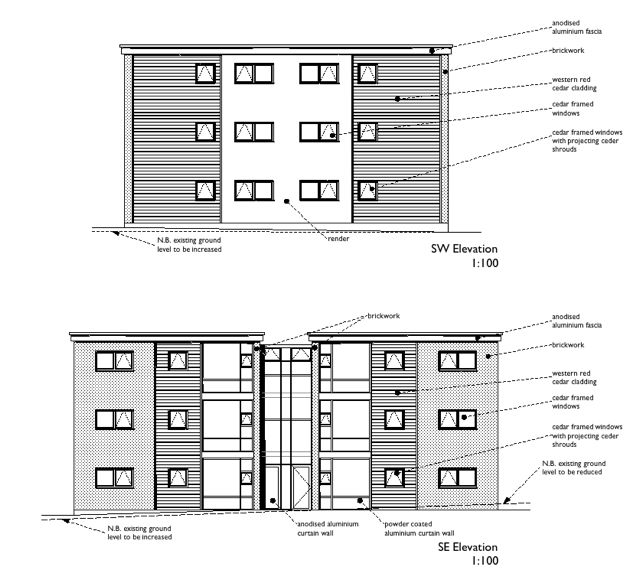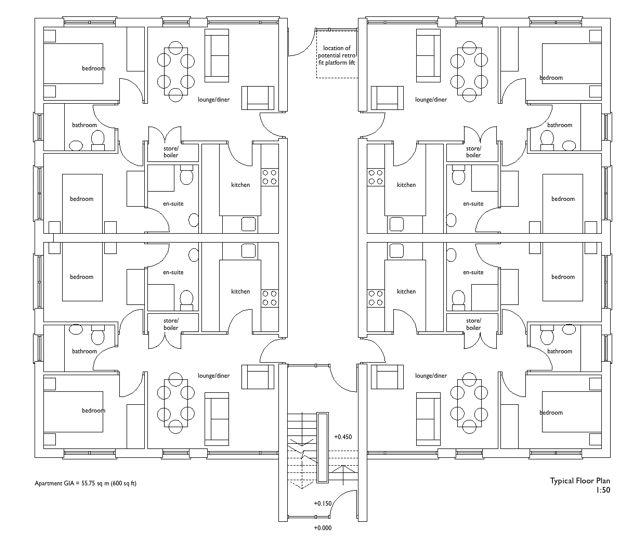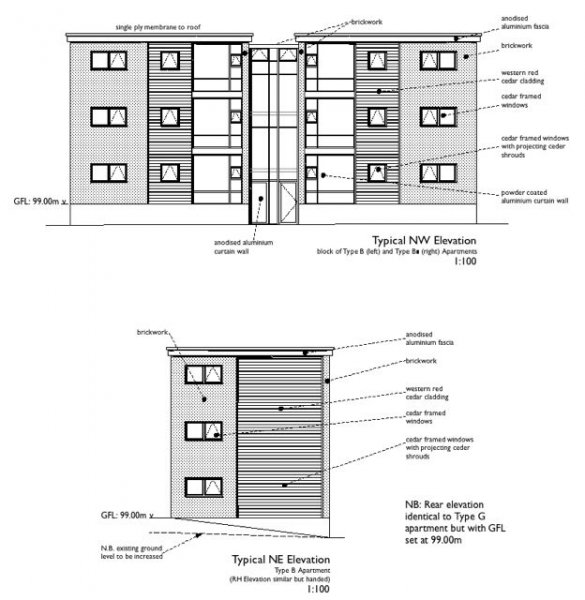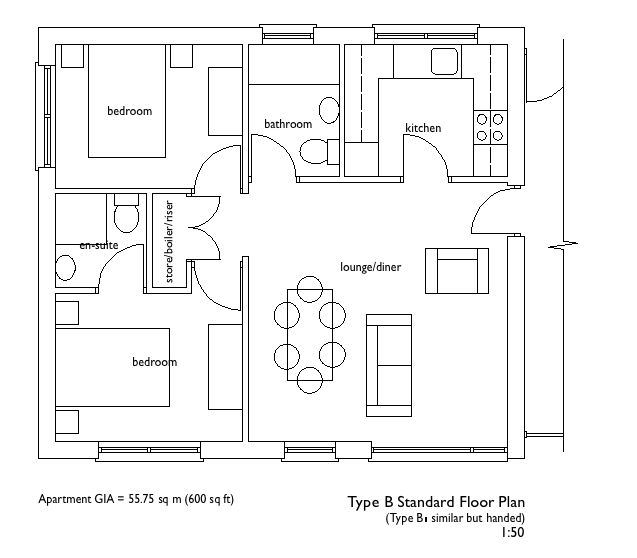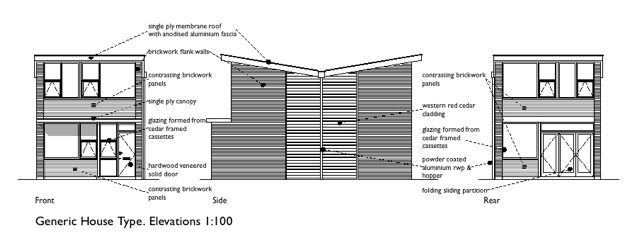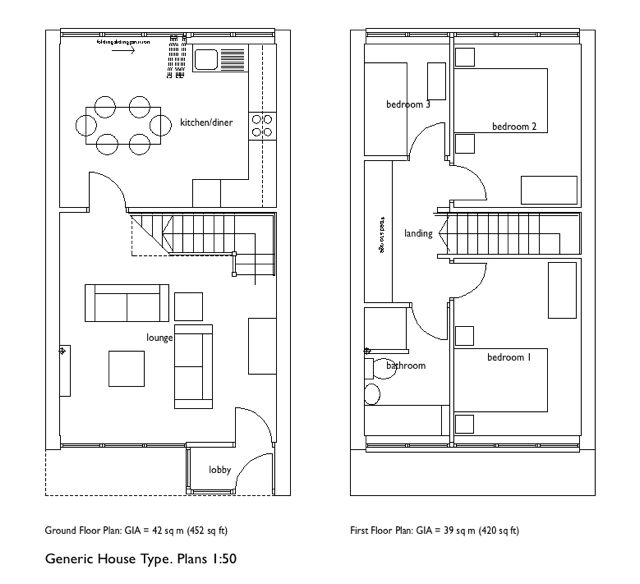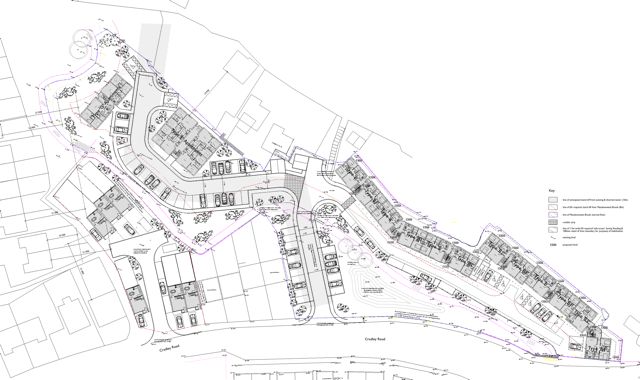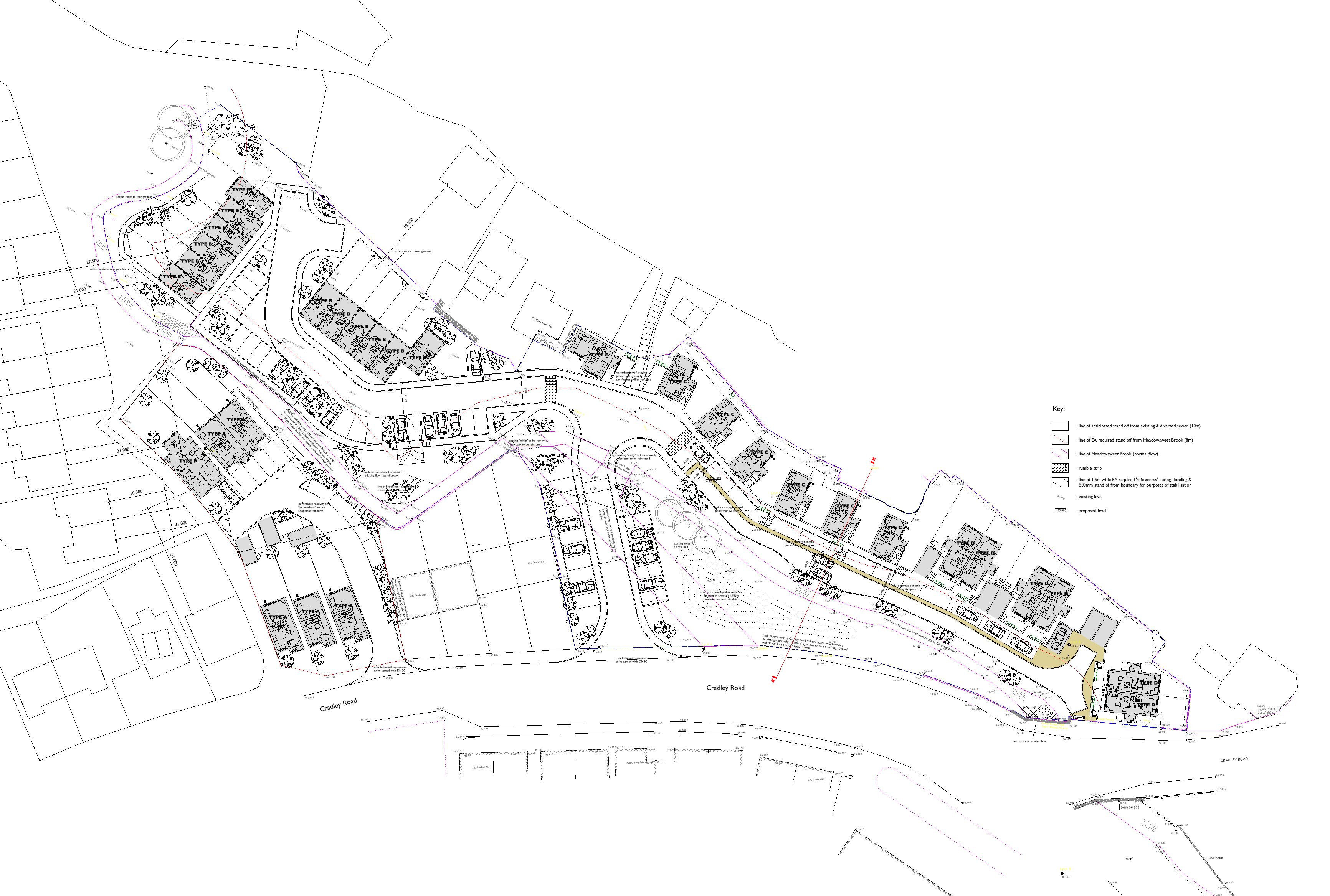Having looked at this site for a former Client previously who had been intending to purchase it for a predominantly apartment scheme with a Housing Association taking majority control after completion, we were honoured to be later approached by the then vendors of the land after the sale had fallen through to look at afresh for them for a housing scheme across the whole site.
More than familiar with the ‘usual’ difficulties of building on previously developed land in the greater Black Country, this site at Cradley straddling the Dudley/Sandwell border therefore lying within the jurisdiction of two Local Planning Authorities, has lain derelict for many years and could not have had many more features to blight it!
The Meadowsweet Brook, classified as a river by the NRA and EA runs through the principle axis of the site with a large meander to the top effectively cutting the site into two. The river regularly flooded and overwhelmed the whole of the site which in many places lay lower than the upper reaches of the river bed, compounded by the constriction caused by the road bridge at its lower site reaches which often clogged with fly tipped debris. Benefitting from an Outline Consent, the Environment Agency had taken great interest in the Application as an external Consultee, and as a result there were many Conditions appended to it: a requirement for an 8 metre development offset from the banks of the river to facilitate maintenance, no changes to the land levels adjacent the river, a minimum ground floor level for all residences on the site and a safe route of escape from the site at that height. A requirement to reprofile the bed of the river and demonstration that flood mitigation measures had been designed to cover high water; debris traps were required at the high and low level reaches of the site.
Japanese Knotweed was prevalent on the site and had grown underneath the river to infest both banks and beyond; a statutory nuisance the treatment of which added seasonal complications to the programme .
Both sides of the river had made ground and the structural implications that causes, but contamination from long past industrial activity was generally below threshold levels. The south eastern boundary of the site is marked by a substantial level change up to the level of Bannister Street adjacent, but supported by an insubstantial blockwork retaining wall which required reinforcing whilst maintaining the upper levels which consisted business premises owned by others.
With very little road frontage, the access was limited by the Highway Engineers to a single point which involved a strip of land over which a right of access existed, but the actual title lay with Dudley Council. Despite the right of access, a public foot path that neatly dissected its width, and the issue of the knot weed rendering this holding virtually undevelopable independently, the ubiquitous pound of flesh was robustly demanded.
Roughly mirroring the path of the river, a large deep sewer sat in its own six metre wide easement, though a scheme to divert its lower reaches released more land than initial analysis offered, but at a cost. A new vehicular bridge was required to link the two halves of the site, but this had to be designed to levels set by the Environment Agency.
Space separation criteria for distances between dwellings further constrained the site when existing adjacent dwellings were taken into account.
Apart from that, the logistics of parking, circulation, servicing, refuse and amenity all added to the design challenge but resulted in a very narrow marginal site.
Our first Client had welcomed a contemporary aesthetic and we designed with a view to rental accommodation and low maintenance and costs in use. Once we had sculpted the site levels and defined the real time developable area it became apparent that there would be a degree of retention along the site giving various terraces which conveniently coincided with pedestrian circulation. Now with an eye to the owner occupier sales market instead, our second Client favoured something more traditional; kerb appeal that which would appeal to the greater market rather than specialist taste.
This was the first of our Clients to react to and aim to provide what the market needs. Affordability rather than affordable, dictated each unit to be as small as policy would reasonably allow to keep build costs low, and then the minimum of private amenity space compensated for by the eventually to be landscaped river environment that would be shared amenity for all. Keeping the unit building costs down not only compensated for the costs associated elsewhere with the creation of a developable site, but would allow them with foresight of the current and future socio-economic climate to aim at that market that currently has no outlet; that which the statistics tell us comprises the first time buyer market aged 37, living at home trying to raise 95% of the annual national salary as a deposit!
All we have to do now is balance all of the above with Planning Policy…

